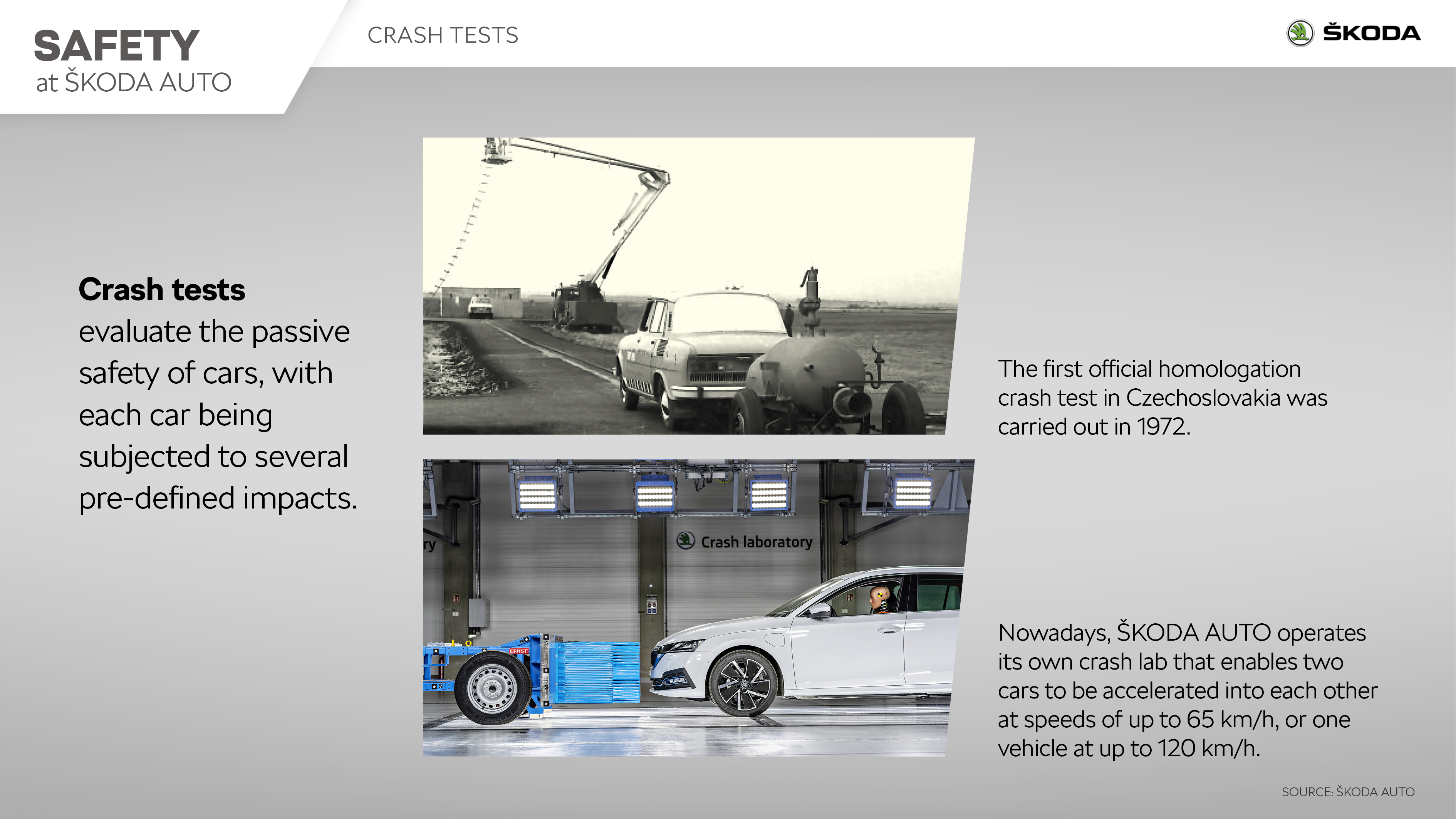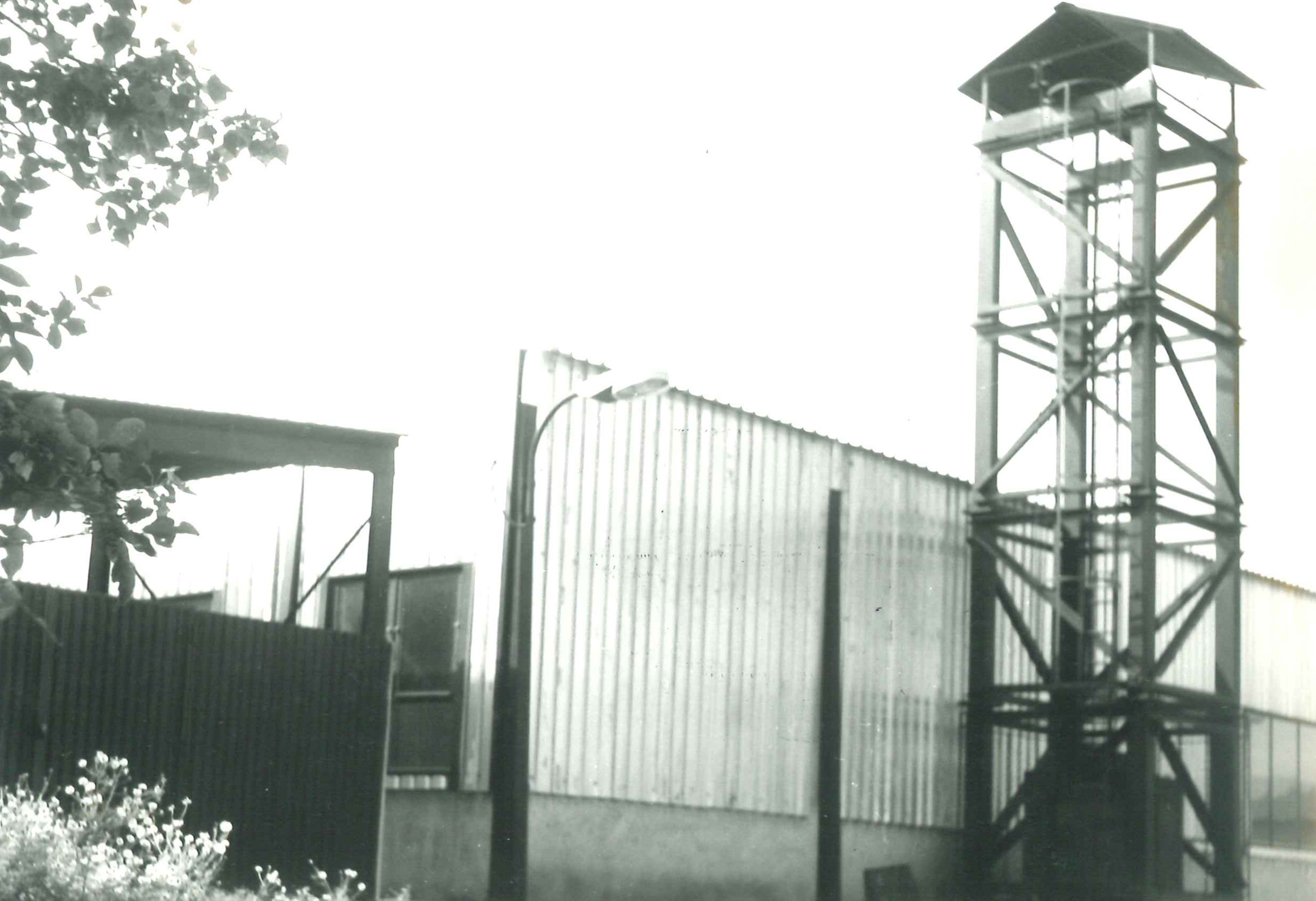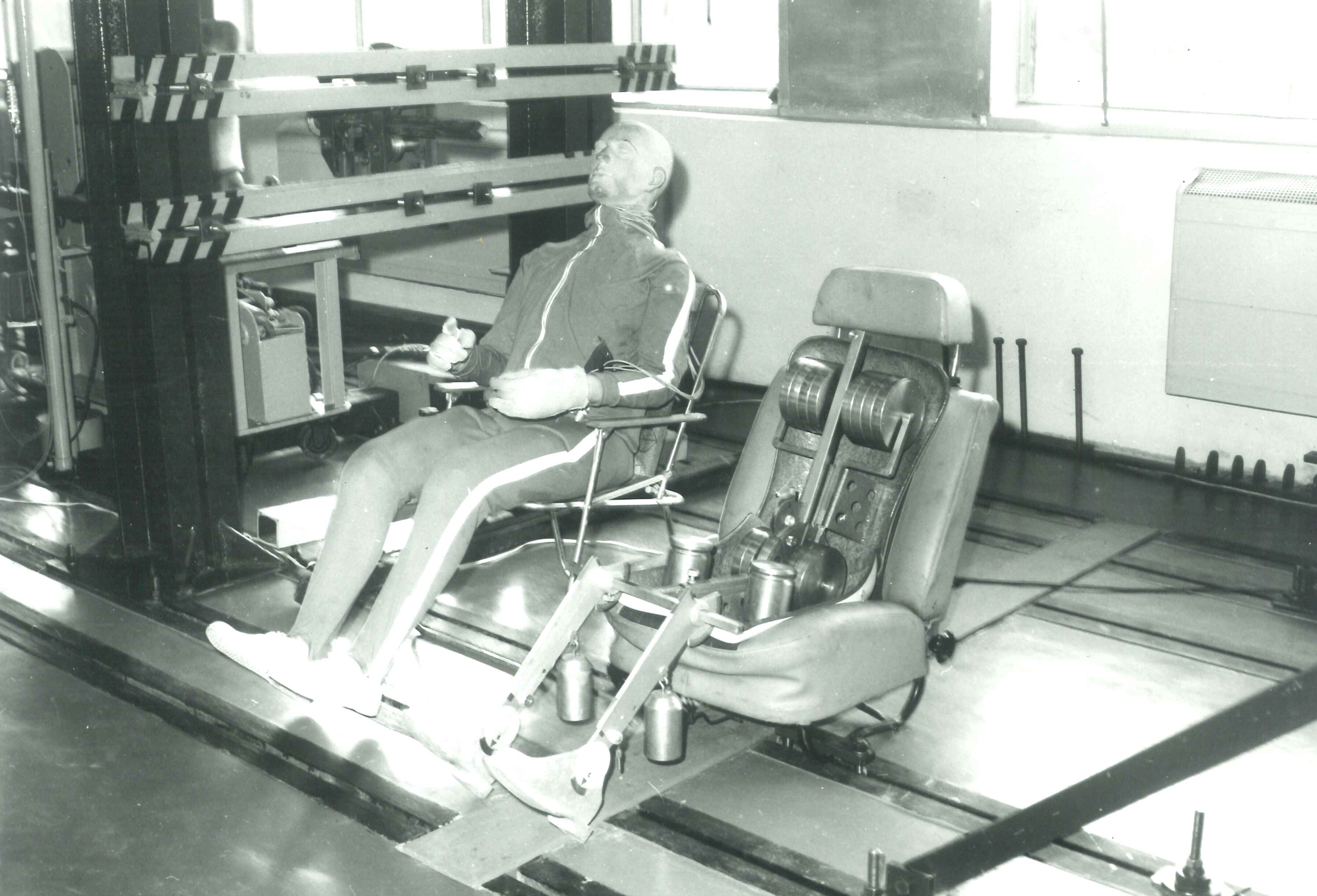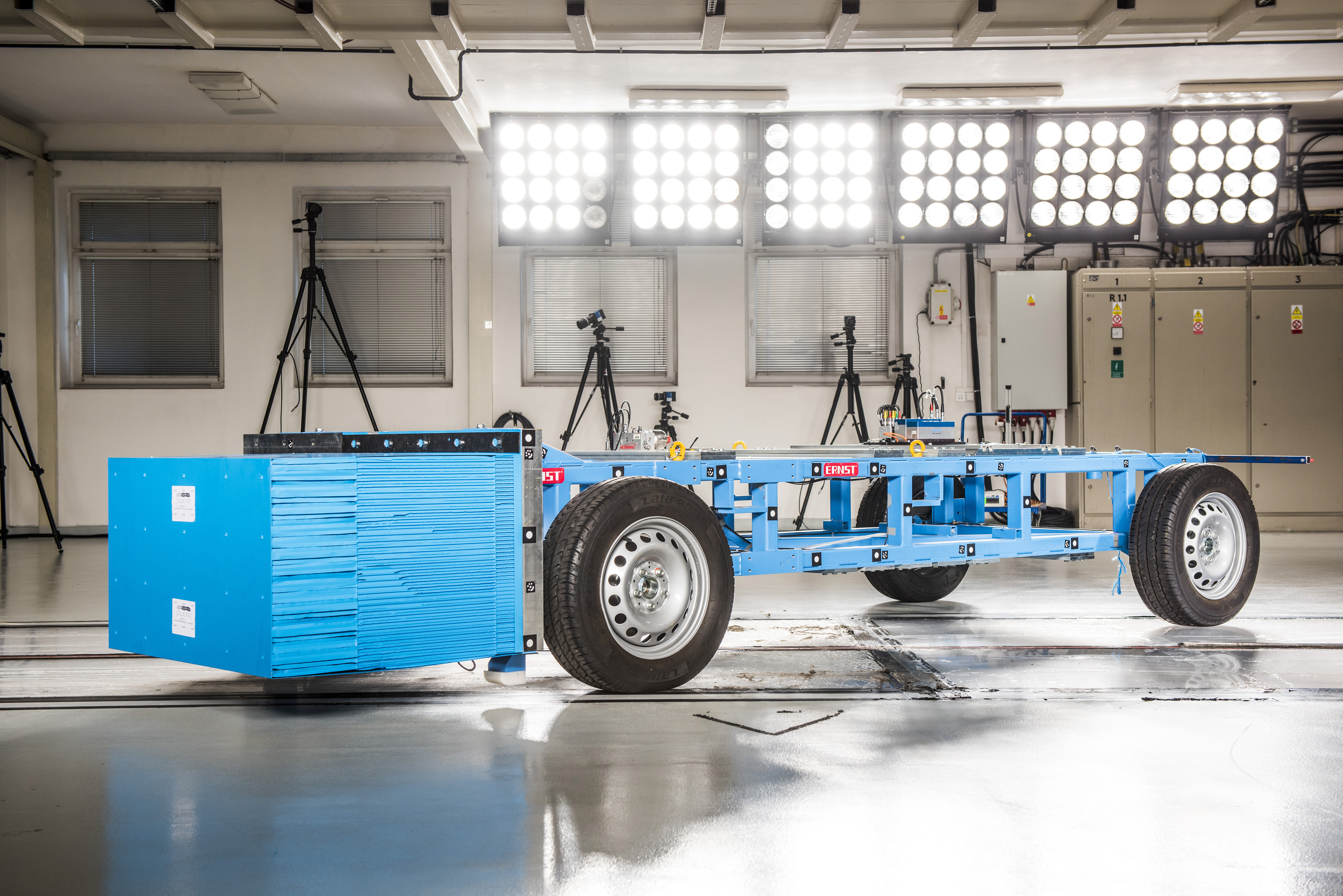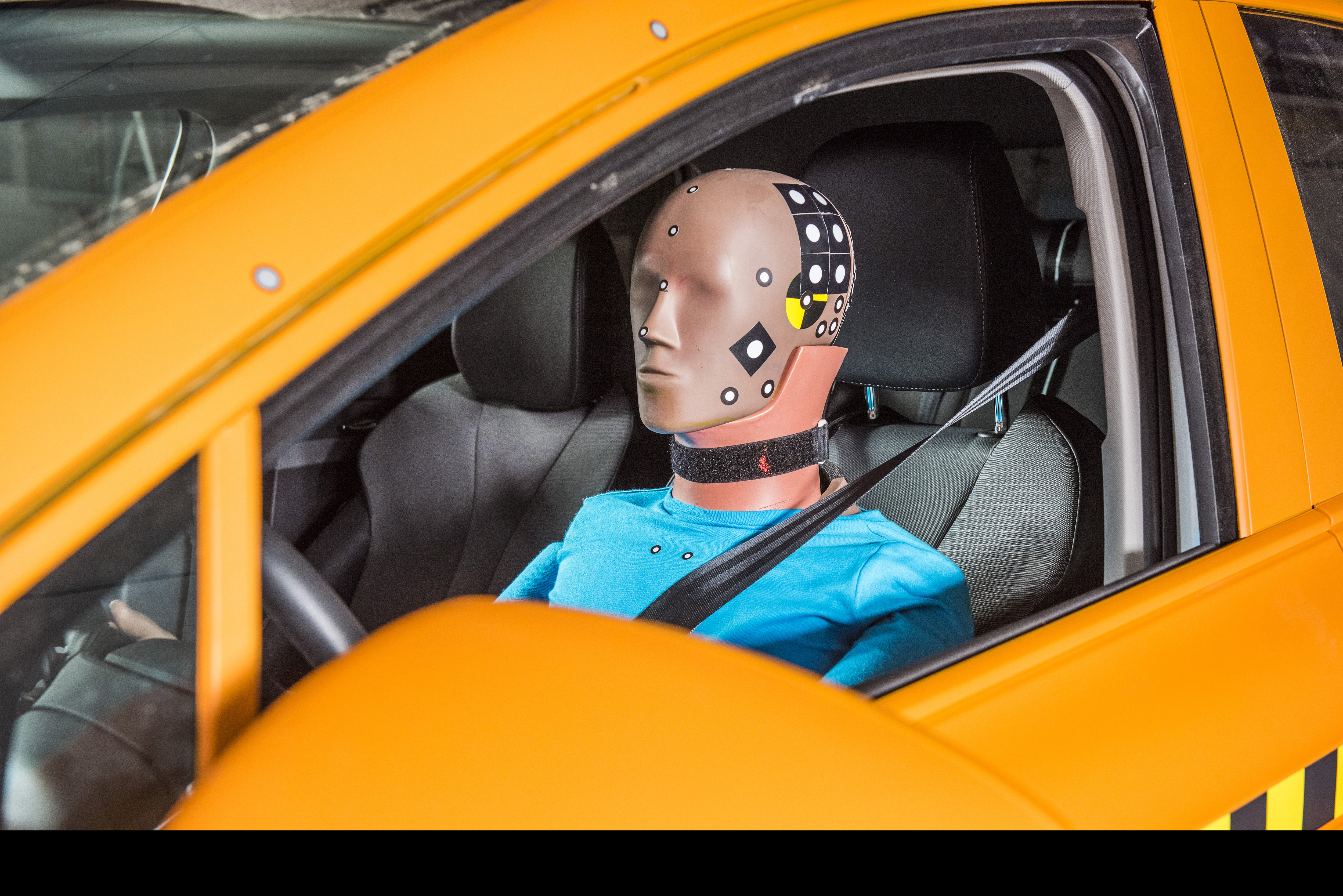› Since 2008, all ŠKODA models tested in the Euro NCAP test have been awarded five stars
› ŠKODA continues to enhance the active and passive safety of its vehicles
› The first documented crash test in former Czechoslovakia was performed in Prague 50 years ago
› Euro NCAP rated the ŠKODA FABIA and ŠKODA ENYAQ iV the safest vehicles in their respective classes; ŠKODA models outside Europe also receive five stars
› Polygon test centre in Úhelnice awarded Crash Lab of the Year 2020
Mladá Boleslav, 4 November 2022 – Ensuring the maximum possible safety of its vehicles is a top priority for ŠKODA AUTO and is also a long-standing tradition: A ŠKODA 100 L was the first documented vehicle to undergo crash testing 50 years ago in Prague-Ruzyně in what was then Czechoslovakia. Today, ŠKODA operates a state-of-the-art crash test facility at its Úhelnice-based Polygon Test Centre, which was comprehensively expanded in 2020 and even won the Crash Laboratory of the Year 2020 from the Automotive Testing Technology International trade journal. The results from the Euro NCAP reference test and the Global NCAP test for crash safety attest to the Czech car manufacturer’s impressive track record; all 15 new ŠKODA models introduced since 2008 have achieved the highest five-star rating. In 2021, the current FABIA and ENYAQ iV were named the safest vehicles in their respective classes.
„At ŠKODA, we use all our expertise in technical development to consistently improve the active and passive safety of our vehicles. Even our entry-level models offer numerous assistance systems that are usually only available in vehicles from higher vehicle classes. At the same time, our state-of-the-art crash laboratory Polygon Úhelnice provides the ideal setting to thoroughly test the safety of our models. This allows us to incorporate our findings into vehicle development at a very early stage. Achieving the highest score of five stars in the NCAP reference test and the Global NCAP test for crash safety for all 15 ŠKODA model series tested since 2008 is an outstanding success.”
Johannes Neft, ŠKODA AUTO Board Member for Technical Development
Steadfast commitment to optimal active and passive safety
ŠKODA has once again expanded its state-of-the-art crash lab at the Polygon Úhelnice Test Centre near Mladá Boleslav to ensure the best possible test conditions. However, crash tests have been conducted in what is now the Czech Republic for 50 years; following the first documented test in May 1972 on a ŠKODA 100 L, crash tests were subsequently designed by specialised staff.
Safety features in current ŠKODA models
Modern assistance systems for active safety
All current ŠKODA models come with a host of safety features. Front Assist with anticipatory pedestrian and cyclist protection and Lane Assist are fitted as standard to all models currently available for order in EU markets. Front Assist uses visual and audible warnings and a gentle braking intervention to warn of an impending collision, including with pedestrians or cyclists, and automatically brakes the vehicle in an emergency. Lane Assist recognises road markings and lane boundaries and helps to keep the vehicle in its lane using active steering assistance. Electronic systems that ensure optimum traction (ASR, ESP, XDS) and shorter braking distances (ABS) also come as standard in Europe. The multi-collision brake can prevent secondary collisions in the event of an accident.
Comprehensive safety equipment for all model series
Additional innovative assistance systems, some of which are optional, are available for all current ŠKODA model series. Up until a few years ago, they were reserved for higher vehicle classes. These include Travel Assist, the scope of which varies by model. Adaptive Cruise Control (ACC) is always included as part of Travel Assist; in some models, an anticipatory variant is available. This uses images from the windscreen camera and data from the navigation system to respond in good time to speed limits or bends, if desired. Travel Assist also includes Adaptive Lane Assist, which recognises roadworks and all lane markings. The top version of Travel Assist is available for the OCTAVIA and the ENYAQ iV family Emergency Assist is also included in the range of functions, as is the new Assisted Overtaking function, which makes overtaking easier. The basis for this is Side Assist, which detects vehicles approaching from behind at a distance of up to 70 metres. Proactive Occupant Protection is available as an option or comes as standard in the OCTAVIA, KAROQ, KODIAQ, SUPERB and ENYAQ iV model series. The system detects an impending collision or rollover, tightens the front seat belts in advance, closes the windows and switches on the hazard warning lights. Collision Avoidance Assist, Turn Assist and Exit Warning are also available for the OCTAVIA and ENYAQ iV. The optional Parking Assist also offers the Trained Parking function in some models, where the system records the path to a frequently used parking space, for example through a narrow, winding driveway. The vehicle can repeat this path at any time as required.
Advanced light technology for optimum visibility at all times
All current ŠKODA models can be equipped with LED headlights that are bright, responsive and at the same time energy-efficient. In some variants, LED technology is also used in the rear lights. For the KAROQ, KODIAQ, OCTAVIA and ENYAQ iV, full LED matrix headlights are either available as an option or come as standard, depending on the trim level. Thanks to matrix technology, individually controllable LEDs make it possible to drive keep the high beam on permanently without dazzling other road users. As soon as the windscreen camera detects vehicles, people or objects that reflect light, the intelligent lighting technology automatically shields them from the beam.
Passive safety with up to ten airbags and ISOFIX and top-tether anchorage points
In EU countries, every ŠKODA model comes with at least six airbags. Driver and front passenger airbags, front side airbags and two head airbags, which also cover the side windows of the first and second row of seats, are on board as standard. There is also an option for two side airbags on the outer rear seats. With an additional central airbag between the front seats, which prevents the front passengers from hitting each other in the event of a collision, the ENYAQ iV family is equipped with up to nine airbags, and the OCTAVIA ten, including knee airbags as standard. To securely attach child seats, all ŠKODA cars feature ISOFIX mounts and a third top-tether anchorage point on the outer rear seats. The FABIA (fourth-generation), SCALA, KAMIQ, OCTAVIA and ENYAQ iV (except ENYAQ iV 50) have additional ISOFIX mounts and top-tether points on the front passenger seat as standard in EU markets. Front passenger seat ISOFIX mounts are available as an option for the KAROQ, KODIAQ and SUPERB model series.
Modern body construction: Torsionally rigid and energy-absorbing
Throughout the vehicle development process, ŠKODA AUTO works to ensure that the body has a high degree of torsional rigidity while ensuring it can absorb a considerable amount of energy. This involves using deformation zones to absorb as much energy as possible in the event of an impact. The aim is to keep the passenger compartment stable during an accident to provide the best possible occupant protection. At the same time, greater body rigidity allows for improved handling characteristics, as the body does not twist when cornering and the wheels always remain precisely aligned relative to the road. ŠKODA is increasingly using Hot Formed and High Strength steel components in its models, mainly on the A- and B-pillars, the bulkhead and the cardan tunnel. In the fourth-generation FABIA, for example, the proportion of the three hardest types of steel – Multiphase steel, Ultra High Strength steel and Press Hardened steel – rose from 15% to 40% compared to its predecessor. Overall, the FABIA body consists of almost 80% High Strength steel components and offers an ideal rigidity ratio in combination with other body components.
Optimal pedestrian protection
Another important aspect of vehicle development at ŠKODA AUTO is achieving the best possible protection for other road users, especially pedestrians and cyclists. This is where intelligent assistance systems and special design features of the body come into play. Even in the early stages of developing a new ŠKODA model, more than 200 pedestrian protection tests are carried out. These include mandatory so-called impactor tests that simulate the impact of a test body in the form of a thigh against the bonnet or a lower leg model against the front bumper, as well as head impact tests for adults and children colliding with the bonnet or windscreen. To protect pedestrians as effectively as possible in the event of a collision, the body design must also provide sufficient space between components such as the engine, shock absorbers, bonnet hinge, bonnet lock and windscreen wiper axles. The bonnet absorbs the impact through targeted deformation and does not have any unnecessary sharp edges or hard structures at the front. Energy-absorbing material fitted in front of the steel reinforcement of the front bumper also enhances the protection of people. Assistance systems like Front Assist with predictive pedestrian and cyclist protection and Collision Avoidance Assist help to avoid accidents involving pedestrians or cyclists. Collision Avoidance Assist helps the driver to take controlled evasive action and prevent an imminent collision by actively increasing the steering torque. In addition, Exit Warning alerts passengers to vehicles or cyclists approaching from behind when opening a door.
Special protection for the battery in electric vehicles
The high-voltage batteries of electric vehicles, such as the ŠKODA ENYAQ iV and OCTAVIA iV, are shock-resistant and specially protected against electrical overload. The battery is incorporated into the floor, while the modules themselves are enclosed in a stable, waterproof casing that can withstand even severe collisions. ŠKODA engineers pay particular attention to preventing the energy storage unit from being overloaded. Thanks to sophisticated safety technology with protective relays and extensive sensors, the possibility of the battery being electrically or thermally overloaded is minimised. Temperature, charging status and other parameters are constantly monitored. Moreover, the high-voltage system is designed to be inherently safe; in the event of a defect or accident, the electrical components are disconnected from the battery within milliseconds. Independent tests, some of which go far beyond the legal requirements, have shown that the well-protected battery packs remained undamaged even when the body was deformed and that the integrated cut-off system functioned safely and reliably in all collisions.
NCAP tests and crash tests in the Czech Republic: Background and history
Numerous internal tests and simulations in preparation for the Euro NCAP tests
In the last test year 2021, the ŠKODA FABIA and ENYAQ iV were the safest vehicles in their respective classes in the Euro NCAP test. The European New Car Assessment Programme is a multi-agency programme founded in 1997 by transport ministries, automobile clubs, insurance associations and research institutes from eight European countries. The consortium performs crash tests on current vehicles and evaluates their active and passive safety as well as rescue and recovery safety. The most important aspect of the test process is the frontal impact test, which ŠKODA AUTO prepares for intensively using comprehensive simulations. Preliminary clay models of new vehicles are scanned and various points, curves and surfaces are applied to them on the computer, resulting in the first digital designs of the vehicle. Once the design is finalised, the entire vehicle is constructed as a computer model. Using simulations, all load conditions can be tested virtually and relevant vehicle characteristics such as rigidity, strength, crash behaviour or even durability and acoustics can be optimised. Some 1,000 computer simulations precede the first real crash test. Around ten real crash tests are carried out in-house as a vehicle is being developed. Tests are also performed on individual body parts, such as the bonnet and front bumper. There are approximately 140 virtual simulations before each component is tested.
ŠKODA models are also recognised as the safest vehicles in their class outside Europe. The Global NCAP has awarded the ŠKODA KUSHAQ and VW Taigun models a 5-star rating, declaring them among the safest family vehicles for adult and child safety. ŠKODA has also achieved excellent results in the ANCAP tests for Australia and New Zealand; the FABIA, KAMIQ, OCTAVIA, SCALA, KAROQ and KODIAQ models all received five stars.
50 years of crash tests in the Czech Republic
The first crash tests involving ŠKODA vehicles may have taken place as early as 1968 on the factory premises in Mladá Boleslav, although there are no official records of this. A ŠKODA 1000 MB was crashed into a wall at a speed of about 20 km/h. The carburettor was adjusted so that the car would reach this speed when idling.
The first documented crash test took place in May 1972 in Prague-Ruzyně on a site next to the present-day Václav Havel International Airport. The test was conducted by the State Institute for Motor Vehicle Research (ÚVMV) following international UNECE (United Nations Economic Commission for Europe) regulations. The test vehicle was a ŠKODA 100 L; the newest ŠKODA model at the time had been in production since 1969 and was also exported to Western Europe. Although safety homologation was not yet mandatory in former Czechoslovakia, it was already obligatory in Western European countries. The test site had to be planned and built by the ÚVMV staff almost entirely by themselves. They developed the steam rocket to propel the vehicle from behind on a driverless test bench. The base of the rig was a 300-litre pressure tank with heating coils. The vehicle and the rocket were kept on track by a rail that ended about five metres before a concrete wall. The steam rocket was stopped by a wedge brake, and the vehicle crashed into the wall at around 50 km/h. The speed the rocket could propel the car depended on the amount of water and the vehicle’s weight. A high-speed camera with a frame rate of 1,000 fps recorded the crash test sequence.
Following the successful premiere, regular crash tests were conducted in what was then Czechoslovakia. The test facility in Prague-Ruzyně remained in operation until 1996. However, the ÚVMV opened a new testing facility as early as 1975 on the former premises of the Czech commercial vehicle manufacturer Avia, which included a hall and an outdoor drop tower, where impact tests were carried out. A weight that was dropped from the tower and suspended on a rope over four pulleys was used to pull the vehicle along a track inside the test facility. The pulley rig enabled the weight to be dropped from a height four times less than the length of the test track. Vehicle accessories, such as seat belts, seats and roof racks, were also put through their paces at this test centre.
Polygon test site opens in Úhelnice
Following the takeover of the Czech ÚVMV, the then TÜV Bayern (now TÜV SÜD) opened its own test centre in the municipality of Úhelnice near Mladá Boleslav in 1996. The first vehicle tested there was a ŠKODA OCTAVIA. In 2000 and 2001, ŠKODA AUTO had the hall rebuilt and extended from its original 50 to 100 metres. The vehicles could be accelerated at a more consistent rate so that the position of the test dummies did not change. ŠKODA also played a key role in promoting the transition from analogue to digital cameras. In 2011, the car manufacturer acquired the test centre and continued to work there with TÜV SÜD Czech. A state-of-the-art, new crash laboratory was commissioned in March 2020. In the same year, it was named Crash Lab of the Year by the trade journal Automotive Testing Technology International. It is more than double the size of the previous facility, and the crash hall is now over 180 metres long. At the heart of the laboratory is an electric drive system. Two vehicles with a total weight of up to 3.5 tonnes approaching each other head-on can be accelerated to up to 65 km/h, or a single vehicle to up to 120 km/h. At present, frontal collisions between two vehicles at speeds of 50 km/h are being simulated there. Nine adult dummies and four child dummies of various designs are used as passengers in the test vehicles. The dummies are placed correctly in the vehicles with the help of an optical device, and the correct seating position is also checked using static photogrammetry. The wide range of other equipment for all current test scenarios includes a measuring wall that records the forces generated in the impact, as well as 20 static and 30 on-board HD high-speed cameras to document all the crash tests. In a separate hall, ŠKODA AUTO has also installed a facility that floods vehicles. It is used as required in the follow-up to crash tests involving electric vehicles.

Vítězslav Kodym
Head of Product Communications
T +420 326 811 784
vitezslav.kodym@skoda-auto.cz
Zbyněk Straškraba
Product Communications
T +420 326 811 785
zbynek.straskraba@skoda-auto.cz



